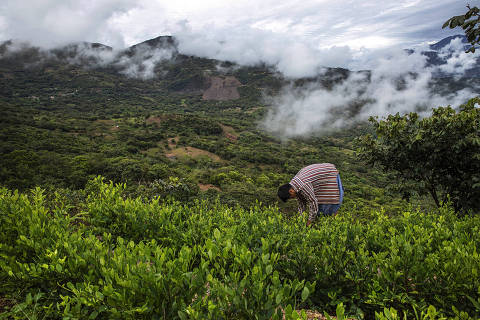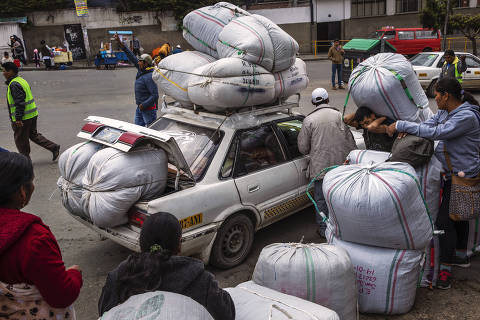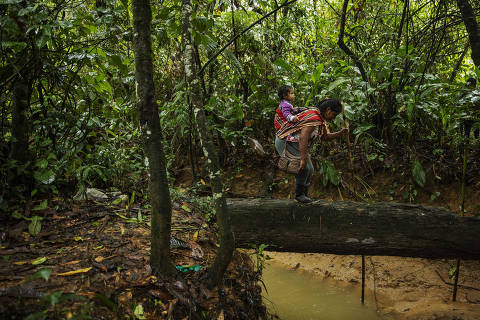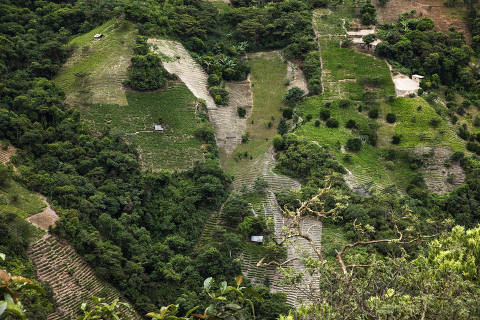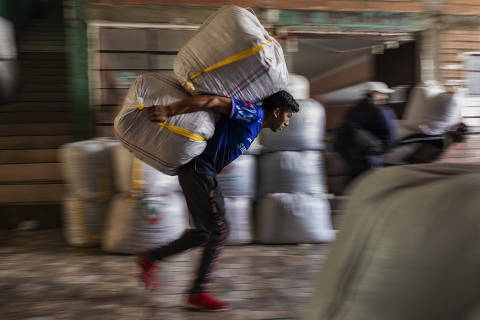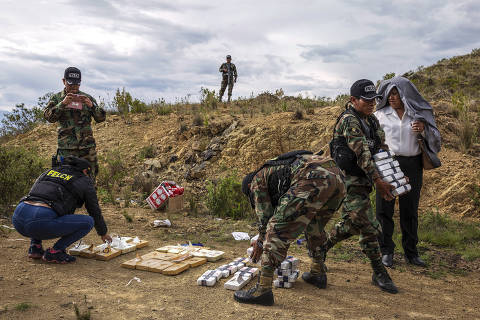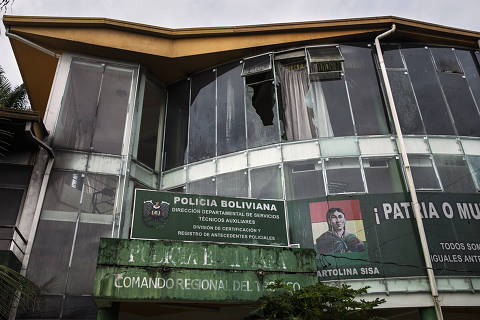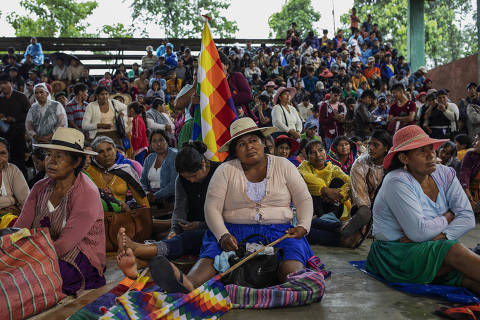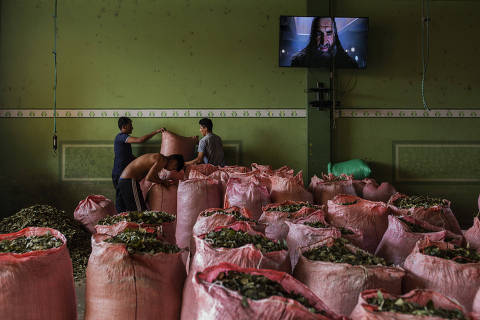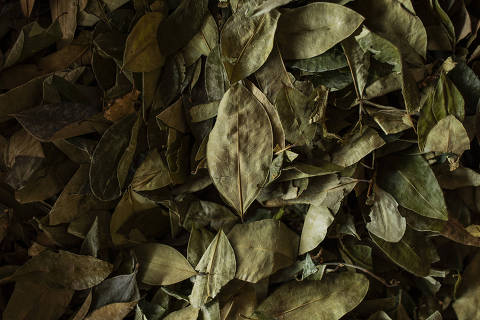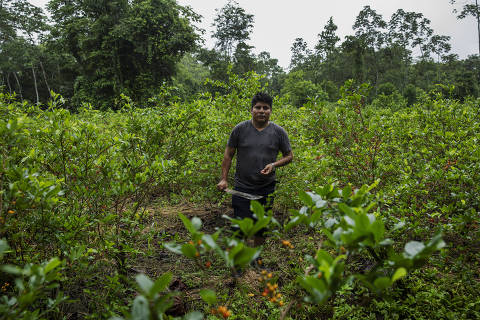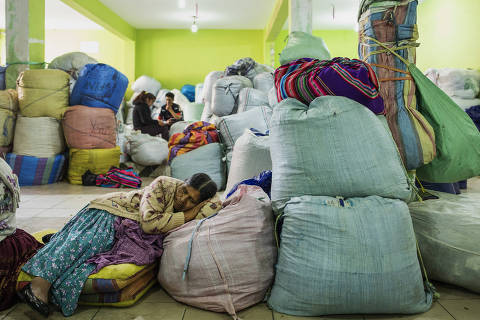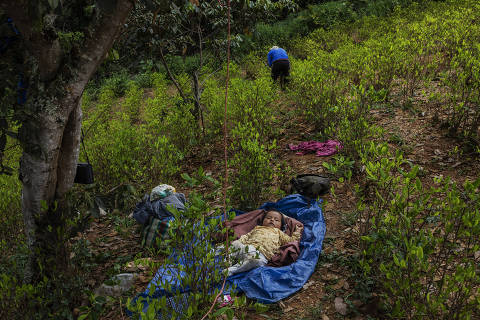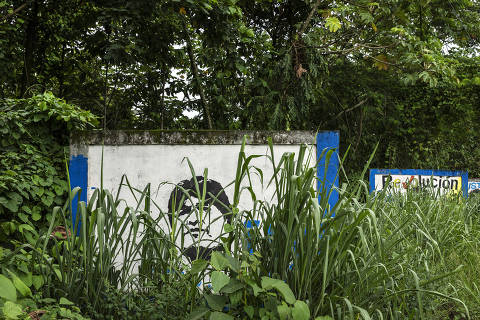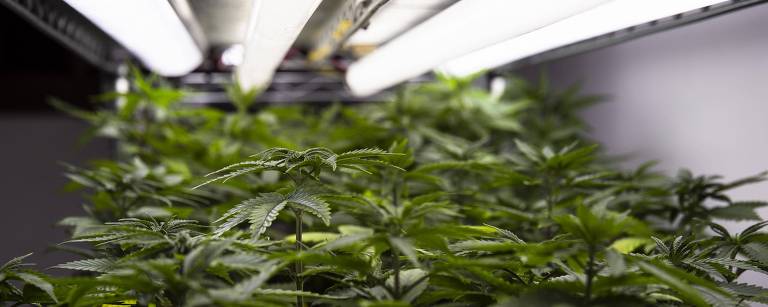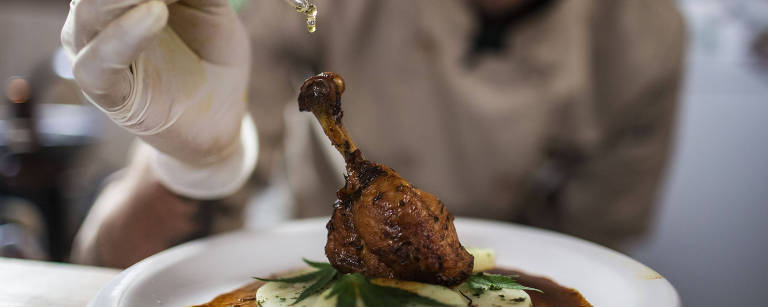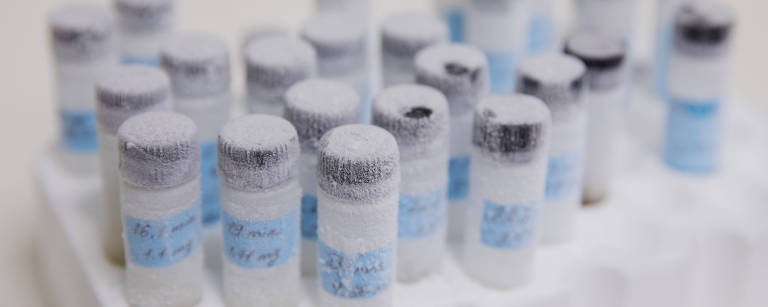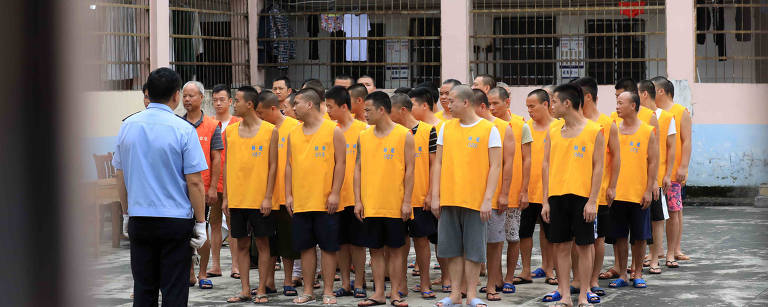
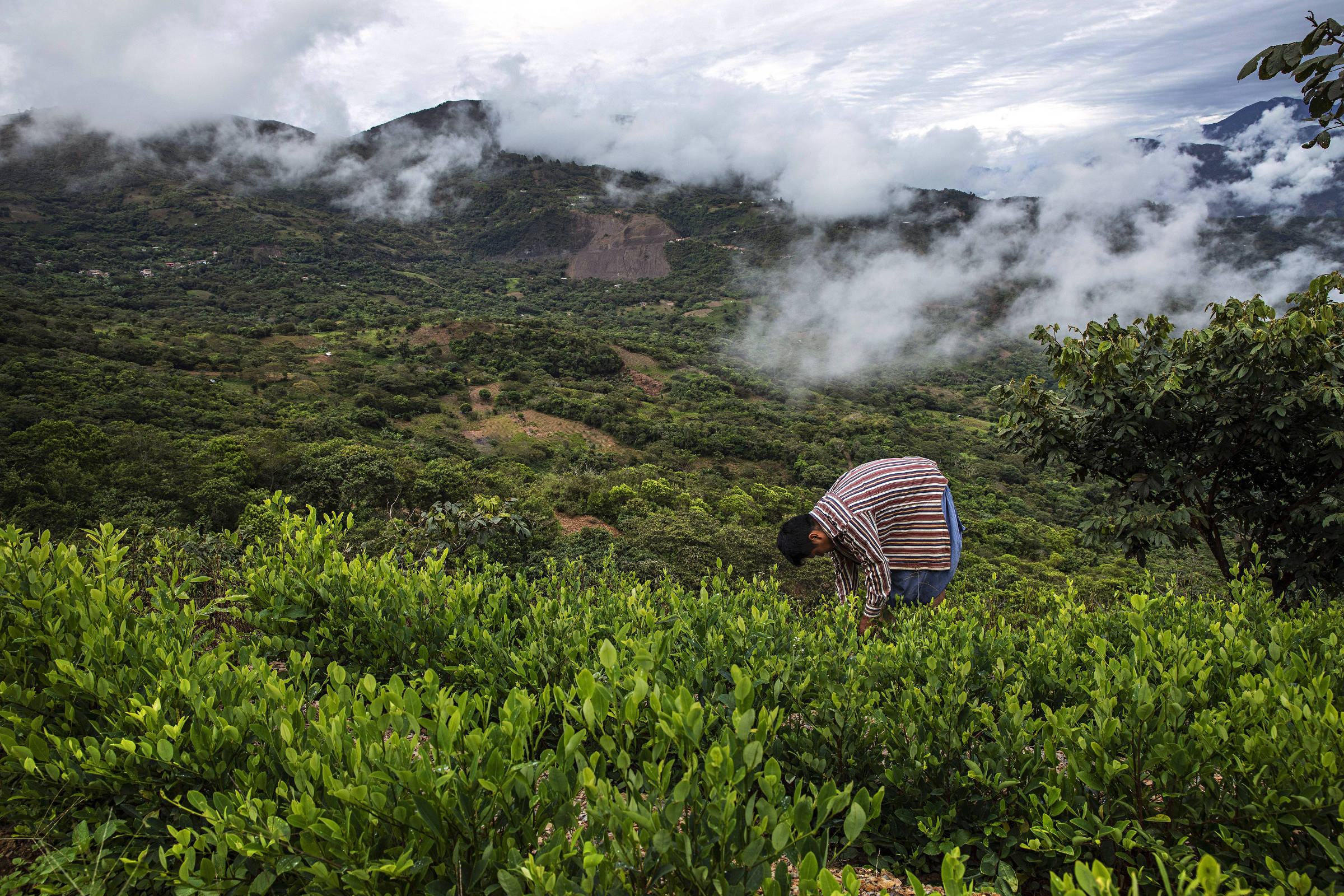
Elton Morán harvests coca leaves in his plot near the village of Huancané, in the Yungas region - Lalo de Almeida/Folhapress
The emblem of the coca leaf on the ax and the machete –the communist symbol of the hammer and sickle– is the emblem of the federation of the Chimoré coca growers’ unions in Chapare. On the cement floor, there are thousands of leaves drying before being bagged. Up until here, the process is within the law, but the final destination is unlikely to be traditional consumption. The greater likelihood is that it will turn to powder.
The scenario suggests a lack of control, but the numbers reveal the opposite. More than a decade ago, when a Chapare coca grower became president, Bolivia adopted a strategy that it never officially admitted to –the legalization of planting for drug trafficking, which resulted in the world’s most successful experiment in controlling cocaine production.
The policy was commanded until recently by Evo Morales, who resigned in October 2019. As a farm leader before becoming president, he faced forced crop clearings financed by the United States and failed attempts at alternative crops. As president (2006-2019), he expelled the DEA (US anti-drug agency), delegated the control of crops to the unions, and increased the area of coca allowed in Chapare, in the center of the country, from 3,200 hectares to 7,700 hectares.
Thus, the North American tutelage, based on the aggressive eradication of the Erythroxylum coca plantations, cultivated in the Andes since at least 2,000 BC, was dismantled. This was after more than two decades of inefficient programs to replace crops and punish drug trafficking, a strategy that predominates in the other two producing countries in the world, Colombia and Peru.
Evo’s Bolivia maintained harsh penalties in the legislation, without legalizing even the consumption of marijuana. But the official discourse became “coca yes, cocaine no,” with an emphasis on traditional use present in several South American countries, including Brazil –in the northwest of the Amazon, the leaf is called epadu.
It is a fact that, in addition to population growth, traditional chewing has gained followers thanks to novelties to improve the bitter taste. The most popular is stevia, a natural sweetener. Coffee and chocolate flavors are other options.
But traditional consumption is far from absorbing production. Figures from the Evo government show that more than 90% of Chapare’s coca does not pass through the two legal leaf markets, in Cochabamba and the capital, La Paz.

Coca leaf farmers carry sacks of leaves outside the Villa Fatima market in the capital, La Paz - Lalo de Almeida/Folhapress
This diversion is easy to see on the streets, including in Chapare. The coca there sold for traditional chewing is usually brought from Yungas, a region near La Paz where the sacred Andean plant has been cultivated for centuries.
The coca leaf is a medium potency stimulant with high nutritional power, source of calories, proteins, calcium, iron, vitamin A and other nutrients. Since before the European invasion, it has been part of the diet of Andean and Amazonian peoples.
Cocaine, extracted from the leaf, was isolated for the first time in 1860, in Germany. For decades, it was used legally in medicine and recreationally until it was banned in several countries in the first half of the 20th century.
Bolivia is Brazil’s leading supplier of cocaine. A 2012 study by the Federal Police revealed that 54.3% of the cocaine entering the country comes from Chapare or the Yungas. Peru appears In second place (38%).
According to a US State Department report, Brazil is the world’s second-largest consumer of cocaine hydrochloride (powder), after the United States, and probably the largest consumer of cocaine derivatives (such as crack).
An important point of departure for Europe, Brazil is the only country bordering the three producing nations. Folha contacted the Federal Police in Brasília to talk about the entry of Bolivian cocaine into Brazil but received no response.
Unlike in the Yungas, intensive coca planting is recent in Chapare. Cultivation exploded from the 1980s because of the demand and available labor following the dismissal and mass migration of miners from the Altiplano, the majority of whom were the Quechua people. Currently, the federations represent about 50,000 families.
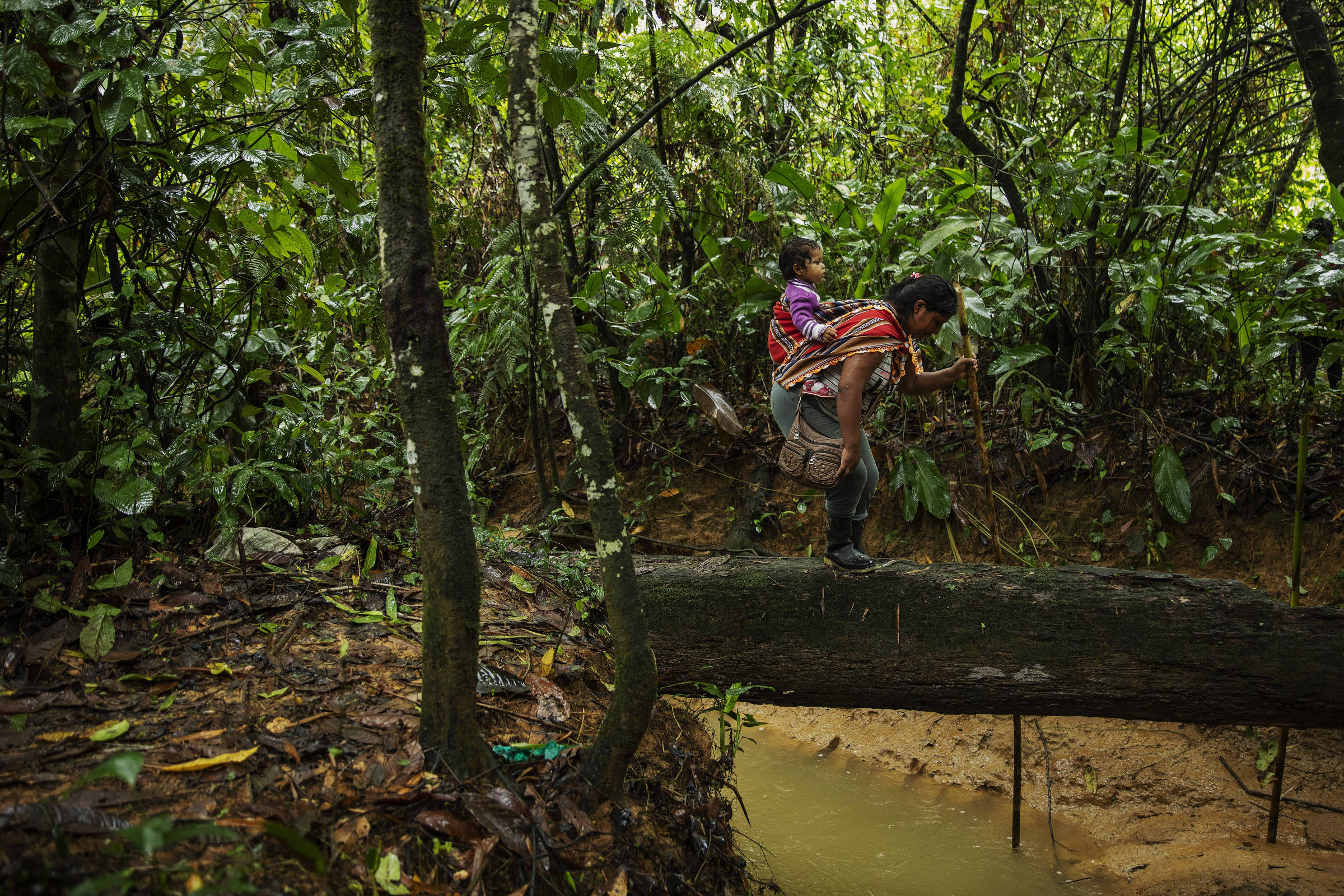
Farmer on the trail that leads to her plot near Chimoré, in the Chapare region - Lalo de Almeida/Folhapress
The legalization of coca in Chapare began under the Carlos Mesa government in 2004, after an agreement with Morales. Since then, a family can plant a maximum of one “cato”, corresponding to 1,600 m².
The surplus is subject to “rationalization.” Unions and federations control who is entitled to a cato and who has exceeded the limit. It is up to the government to combat cultivation in unauthorized areas, such as national parks and regions outside Chapare and the Yungas.
There was no lack of criticism of the work in Chapare, mainly coming from the USA. Opponents, such as former President Jorge “Tuto” Quiroga, predicted that coca would finance a new narco-state, as it had in the early 1980s.
But that was not the case. In 2008, when Evo expelled the DEA, Bolivia had 25,400 hectares of coca. Eleven years later, the country had an almost identical surface, 25,500 hectares.
In the same period, Colombia, which adopts a hard line and receives average aid of US$ 400 million (more than R$ 2.1 billion) per year from the USA, saw the planted area jump 90%, reaching 154,000 hectares. It is by far the largest producer of cocaine, followed by Peru and Bolivia. The figures are from UNODC (UN Office on Drugs and Crime).
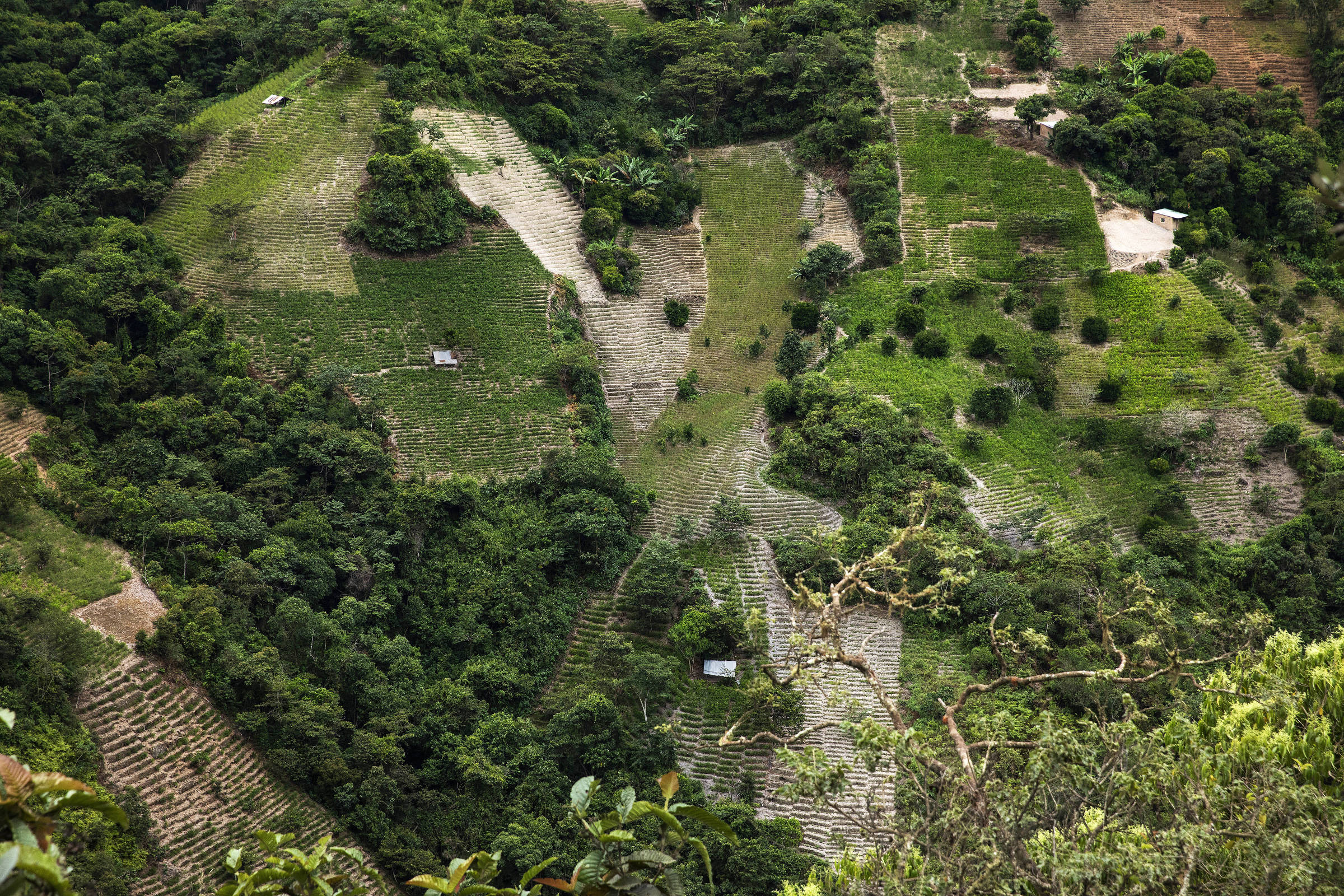
Coca leaves planted in the mountains in the Yungas region - Lalo de Almeida/Folhapress
Another favorable comparison is the level of violence. In Bolivia, the homicide rate is 6 per 100,000 inhabitants, one of the lowest in Latin America. The homicide rate reaches 25 per 100,000 inhabitants in Colombia, one of the highest in the region. Peru occupies an intermediate position.
“There are no cartels [in Bolivia], like the one in Cali or Sinaloa. There are links with some international organizations to transport the drug, but it is a Bolivian crime, not as aggressive as in other countries. And the police’s special forces have control,” says the former director-general of the Special Force to Fight Drug Trafficking, General Luis Caballero, in La Paz, where he is now a lawyer.
In a report by the American State Department, Bolivia and Venezuela appear as the only countries that “have proven to have failed” to fulfill international obligations to combat drug trafficking. In justifying the classification, which generates sanctions against Bolivia, the document mentions the increase of the legal area from 12,000 hectares to 22,000 hectares, in 2017.
The expansion has no technical support. In 2013, a survey financed by the European Union concluded that 14,700 hectares are sufficient for traditional consumption.
“Of course, this is ‘de facto’ legalization,” says economist Roberto Laserna, who has studied coca for more than two decades. “Knowing the destination of this coca, it was allowed to be produced and sold. The government’s idea was to crack down on the drug trafficker and release the coca grower, but obviously, there is a direct connection between them.”
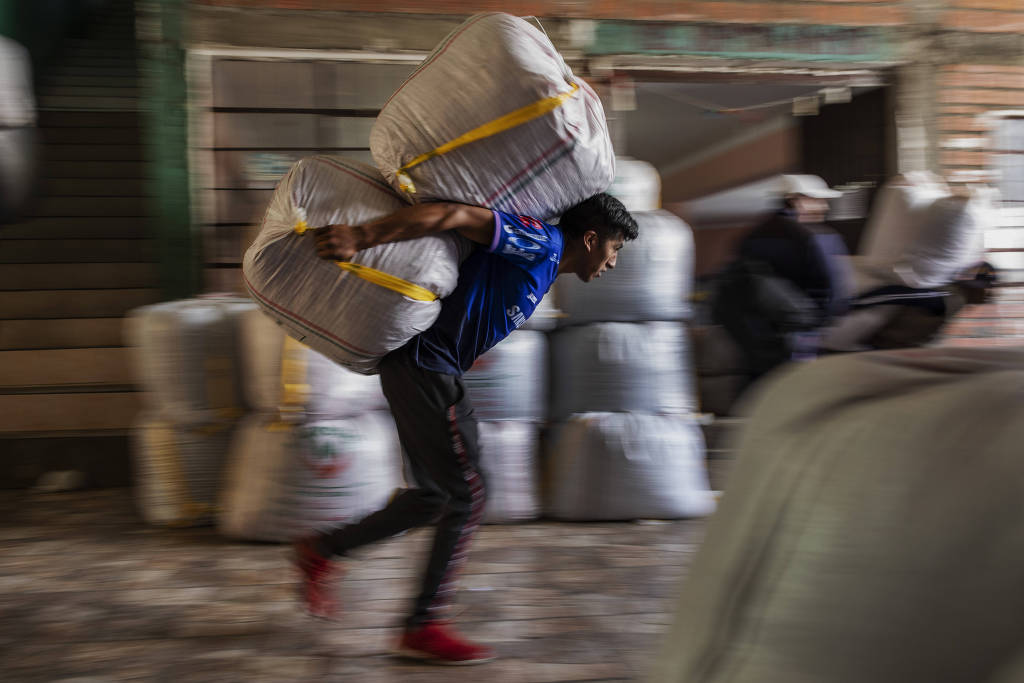
An employee carries sacks of leaves in the Villa Fatima market in La Paz - Lalo de Almeida/Folhapress
An advocate for the regularization of coca and cocaine, the researcher from the Center for the Study of Economic and Social Reality of Cochabamba, emphasizes that control should be the State’s responsibility. In Chapare, he says, the result was a “republic” controlled by the unions, in which peasants have little decision-making power while drug trafficking grows.
“The solution to the problem of coca and cocaine requires some form of legalization and regularization. And that starts with controlling coca through permits to individual producers. This is impossible now because of the unions’ power, the State’s absence, and the penetration of drug trafficking in this area.”
National Police Colonel Rolando Raya has 30 years of experience combating trafficking in Cochabamba. He says that with the Evo Morales government, production became “self-disciplined,” and the cato made money that was shared homogeneously.
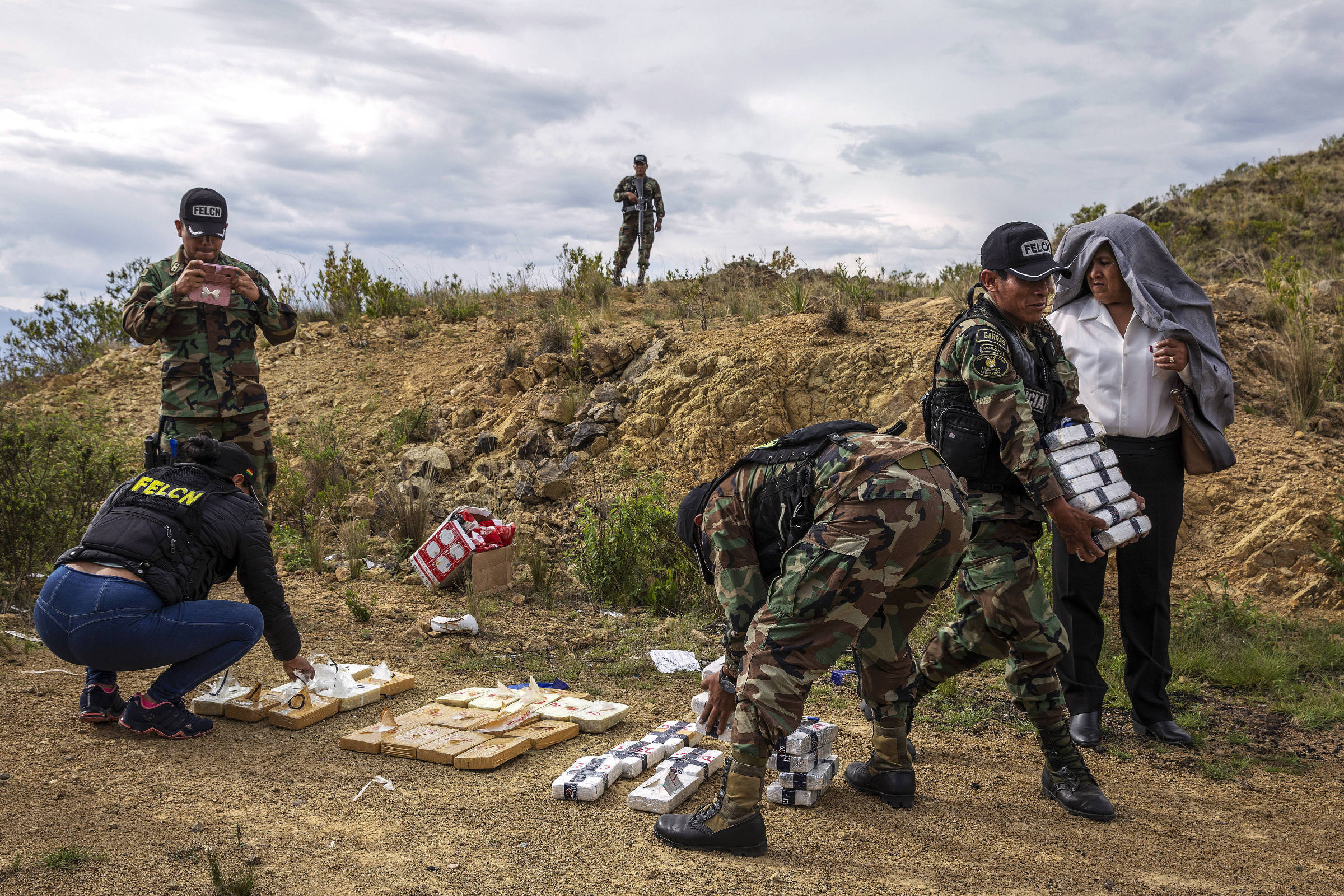
The police prepare to burn aprehended drugs near Cochabamba - Lalo de Almeida/Folhapress
“They thought: ‘What will happen if we produce more? There will be an intervention. Then we will make a successful policy. It’s nice to have my cato’". Nobody grew more than they had to grow. It is disciplined drug trafficking,” he said in an interview at the headquarters of his command.
A former member of FELCN, Raya says that, on the other hand, there is greater penetration and dispersion of trafficking, which has gone from great chiefs to family clans. “The [cocaine] factories are all over Bolivia,” says the colonel, who sees an increasing loss of territorial control.
“If we enter, there is death. Even the Morales government was unable to enter.”
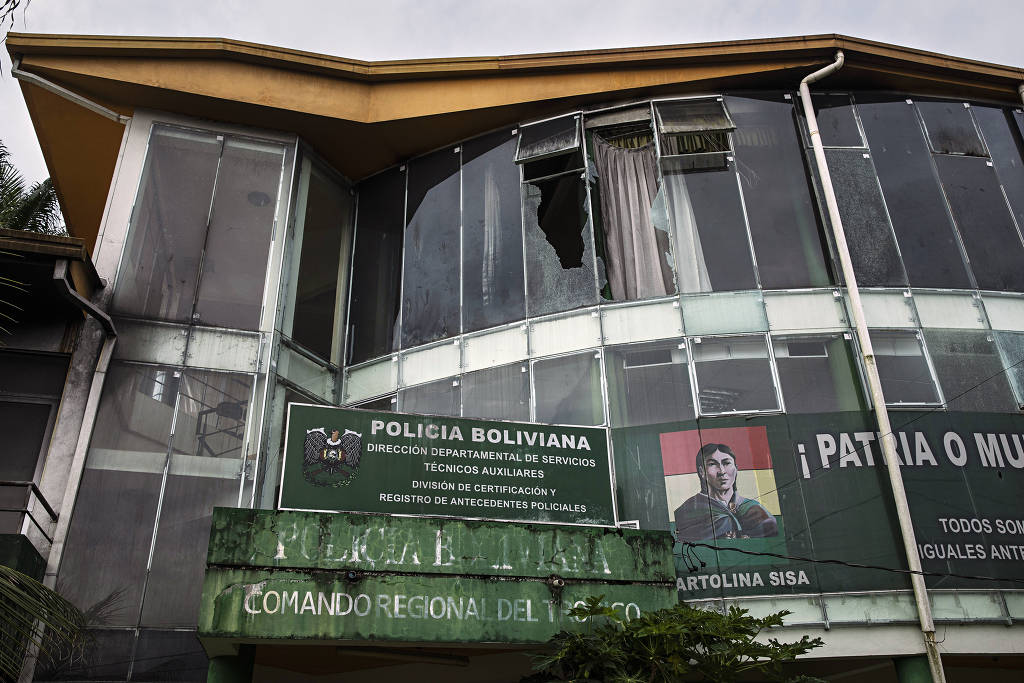
A police station that has been destroyed and abandoned in Villa Tunari, in the Chapare region, which supports ex-president Evo Morales - Lalo de Almeida/Folhapress
Orphaned at the age of 12, Edgar Quispe migrated from Potosí to Chapare in the 1980s to work on coca crops. He said that the government acted violently to eradicate coca until the Gonzalo Sánchez de Lozada government (2002-2003). Alternative crops, he says, did not work.
“There was no market. The only way to survive in the tropics of Cochabamba was coca,” says Quispe during a meeting of women working on coca plantations in Chimoré, in a sports gym surrounded by mud and crowded with street food vendors. Despite the name of the event, only men spoke on the day the Folha was there, right before the coronavirus pandemic.
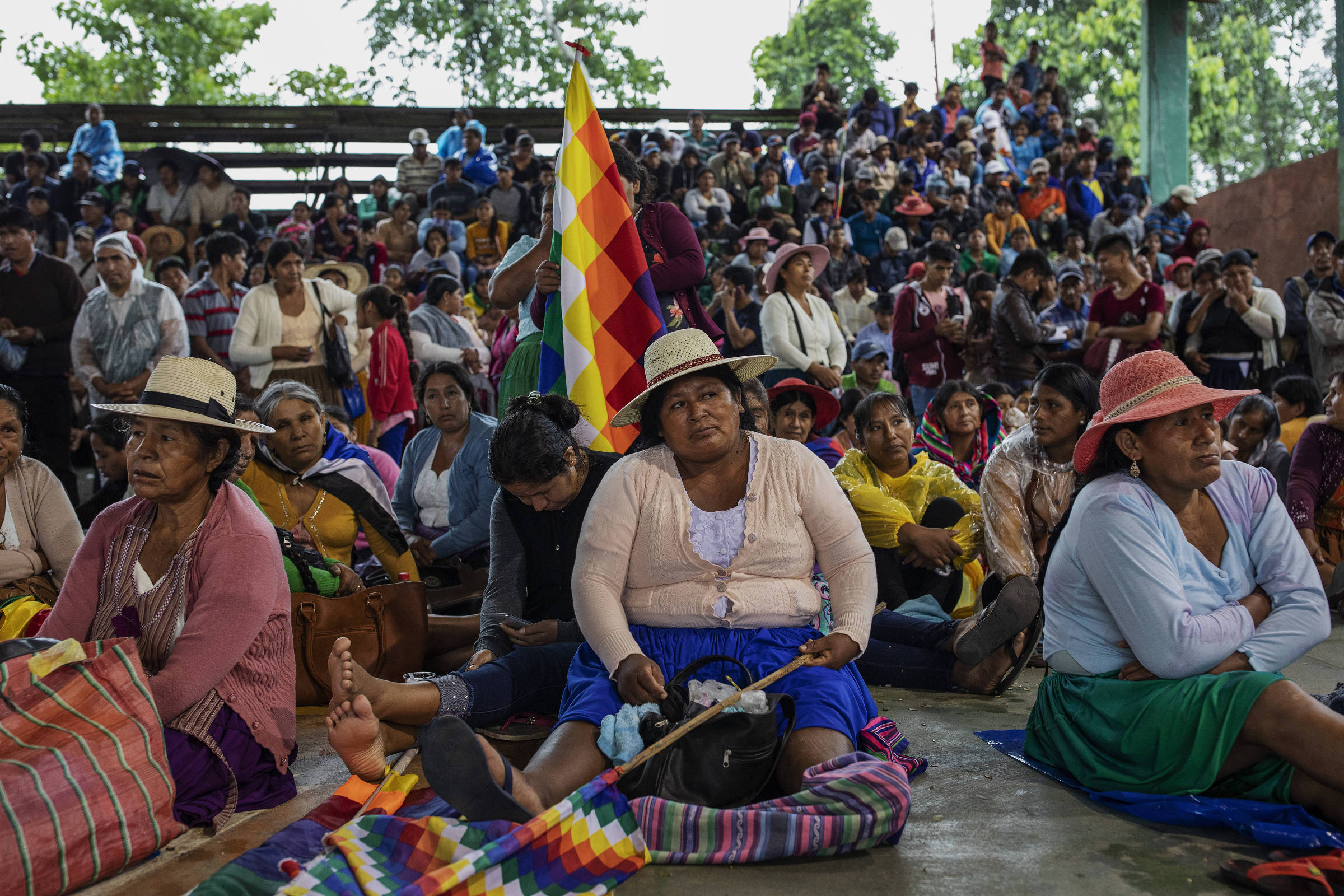
Farmers attend a meeting in a gym in Chimoré, Chapare region - Lalo de Almeida/Folhapress
In the past, Quispe had his plantation forcibly destroyed. With no alternative, in 1992, he migrated to Argentina, where he stayed until 2001. As a result of the repression, explains Quispe, the coca growers began to form the Movimento ao Socialismo party, which came to control the Chapare city halls and, in the 2005 election, would take Evo to power. With the former coca grower in power, the dynamics changed. “If there is surplus coca, it has to be announced, and the person has to allow entry to his plot.”
Now 49, he grows coca legally. With the money saved in Argentina, he bought 25 hectares. His main activity is cattle raising –he has 20 animals.
Like other coca growers, Quispe moved to Chimoré, 10 km from his cato, a city of informal commerce, simple houses, and poorly preserved paving streets. Coca income is reasonable. In the federation, the leaf bag (23 kg) is sold for 1,200 Bolivians (R$ 730). Each plot produces, on average, three bags every three months.
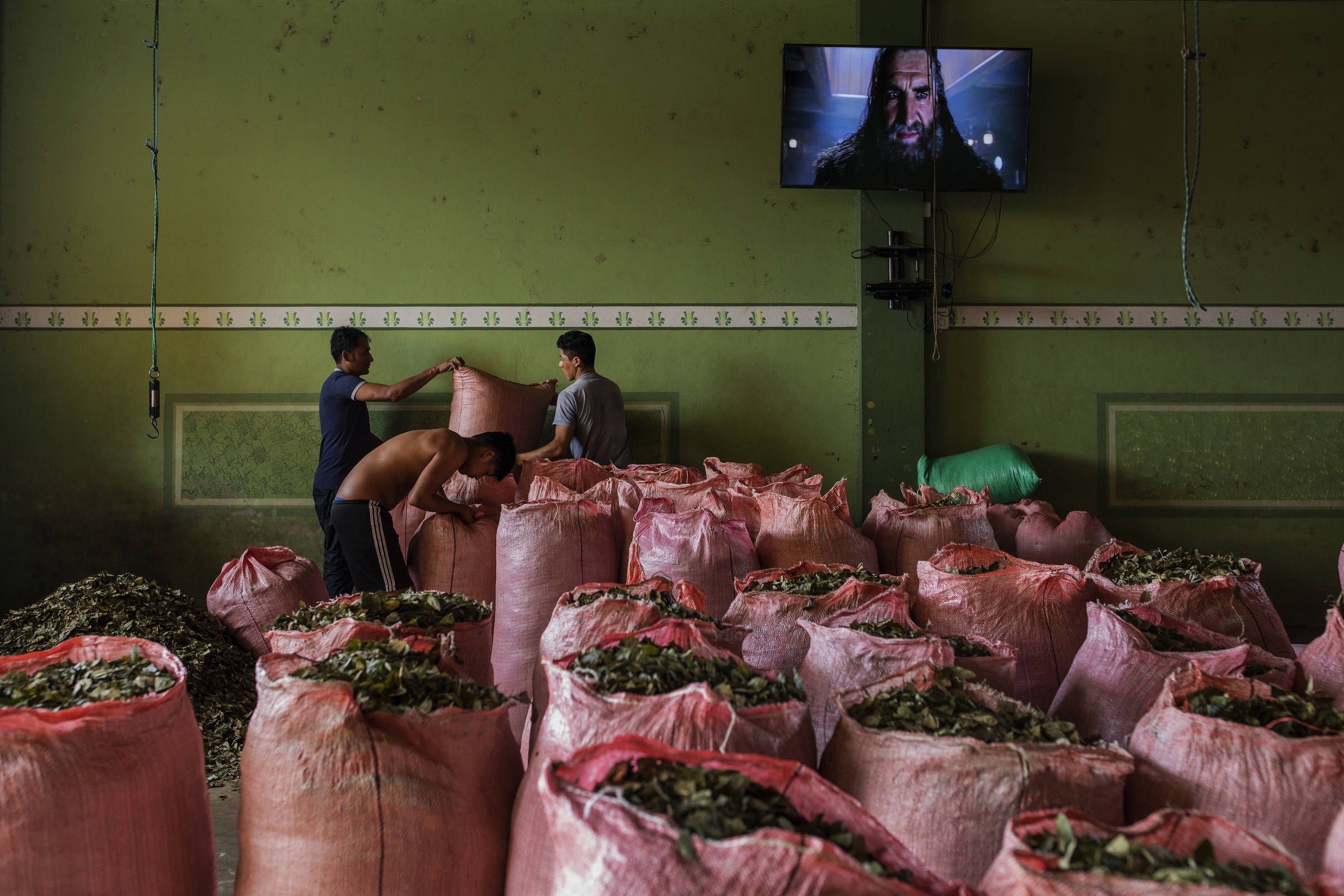
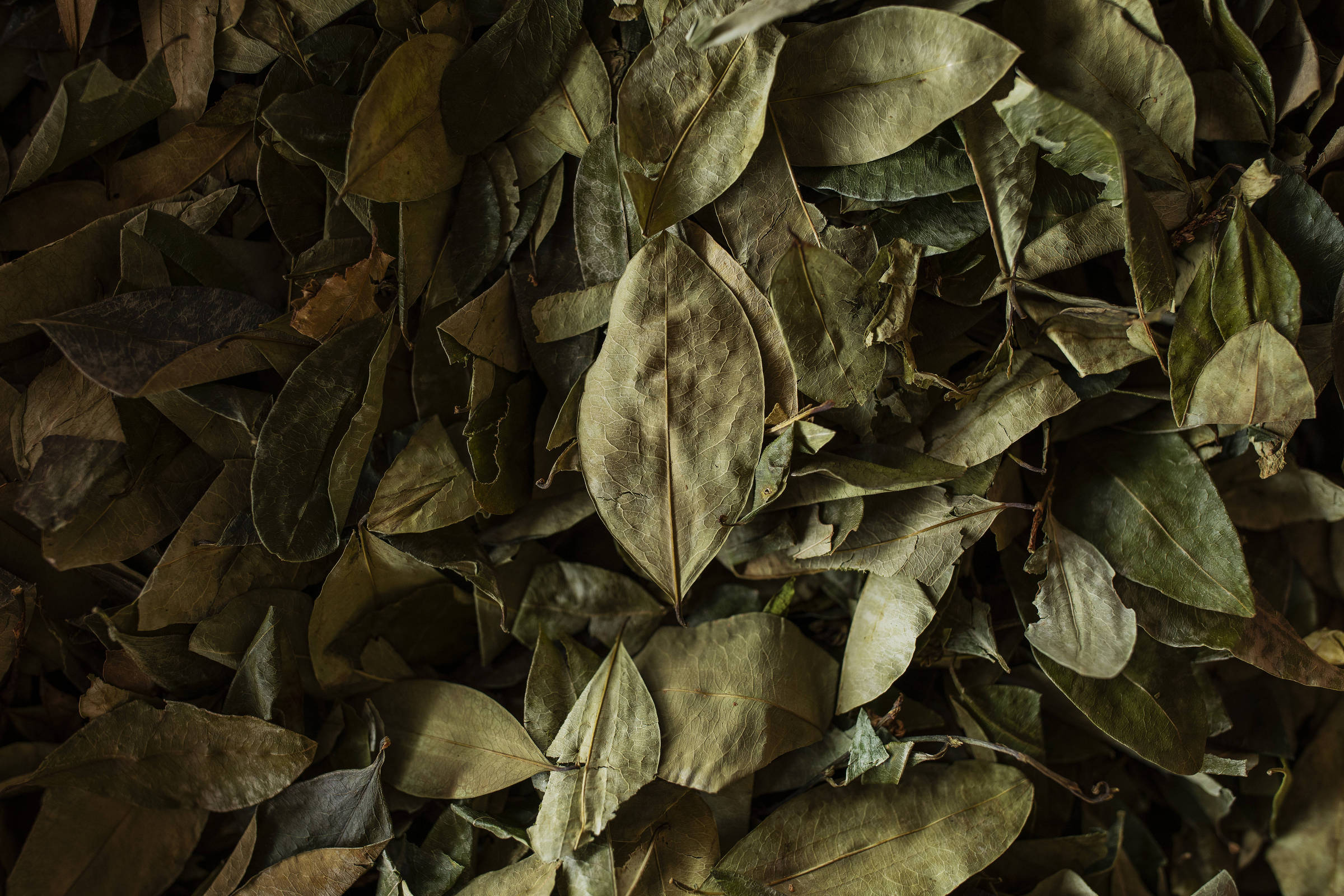
Sacks and coca leaves in the market in Chimoré, Chapare region - Lalo de Almeida/Folhapress
The plantation areas, previously accessible only after long walks, are now connected by dirt roads. In the region visited by Folha, the coca plantation was about a 5-minute walk from a road. Plantation workers work there during the day, and at night they return to the city.
To supplement income, peasants also work for other peasants. The entire planting of coca is manual –the ax and machete are used to open the forest fields. A day rate of pay is 120 Bolivians (R$ 73).
Echoing Evo’s speech, nobody admits that Chapare’s coca goes mainly to drug trafficking. “We sell at our storage centers, dispatch to the departmental level, in Cochabamba, and then to the country. Coca is distributed for pijcheo [chewing],” says Leonardo Loza, one of Chapare’s main leaders and affiliated to MAS.
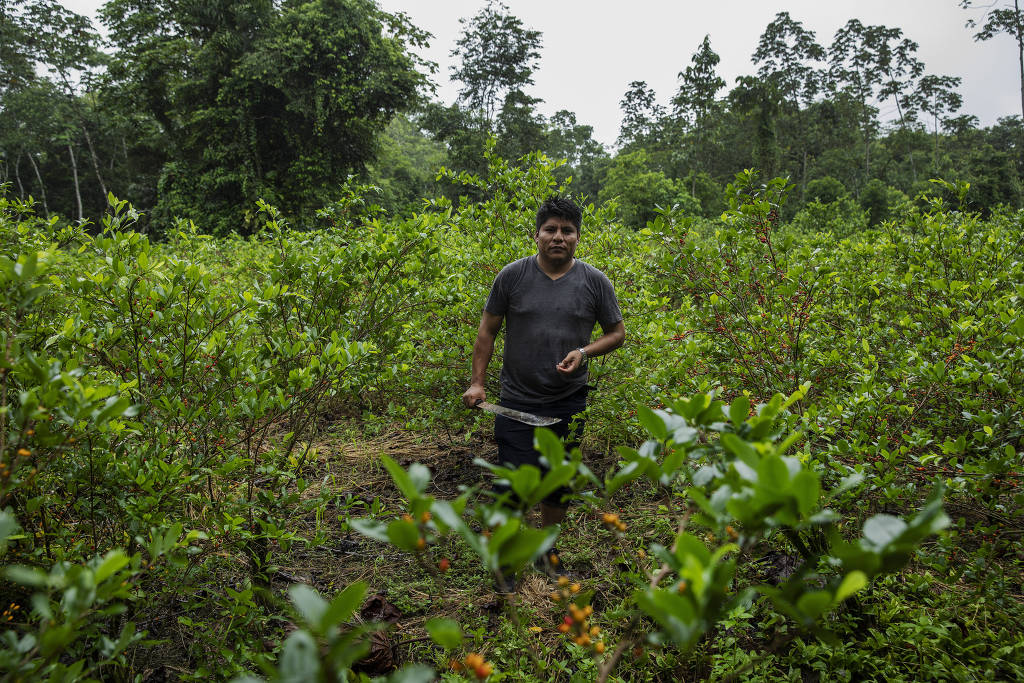
Leonardo Loza, a famers’ leader, in his plot in Chimoré - Lalo de Almeida/Folhapress
Folha also visited the Yungas region. Although it is only a few dozen kilometers from La Paz, the trip takes time due to the precarious roads carved into the mountains that make the transition from the Andes to the Amazon.
As in Chapare, there are no signs of wealth or inequality. The houses, built on steep slopes, are simple, and the cars, old –most of them circulate without license plates, smuggled from Chile.
However, unlike Chapare, the main cocalero leaders of the Yungas stopped supporting Evo. Always latent, the differences were wide open after the 2017 law, which expanded the area of crops. The measure, say the leaders, favored Chapare and legalized production that goes to drug trafficking.
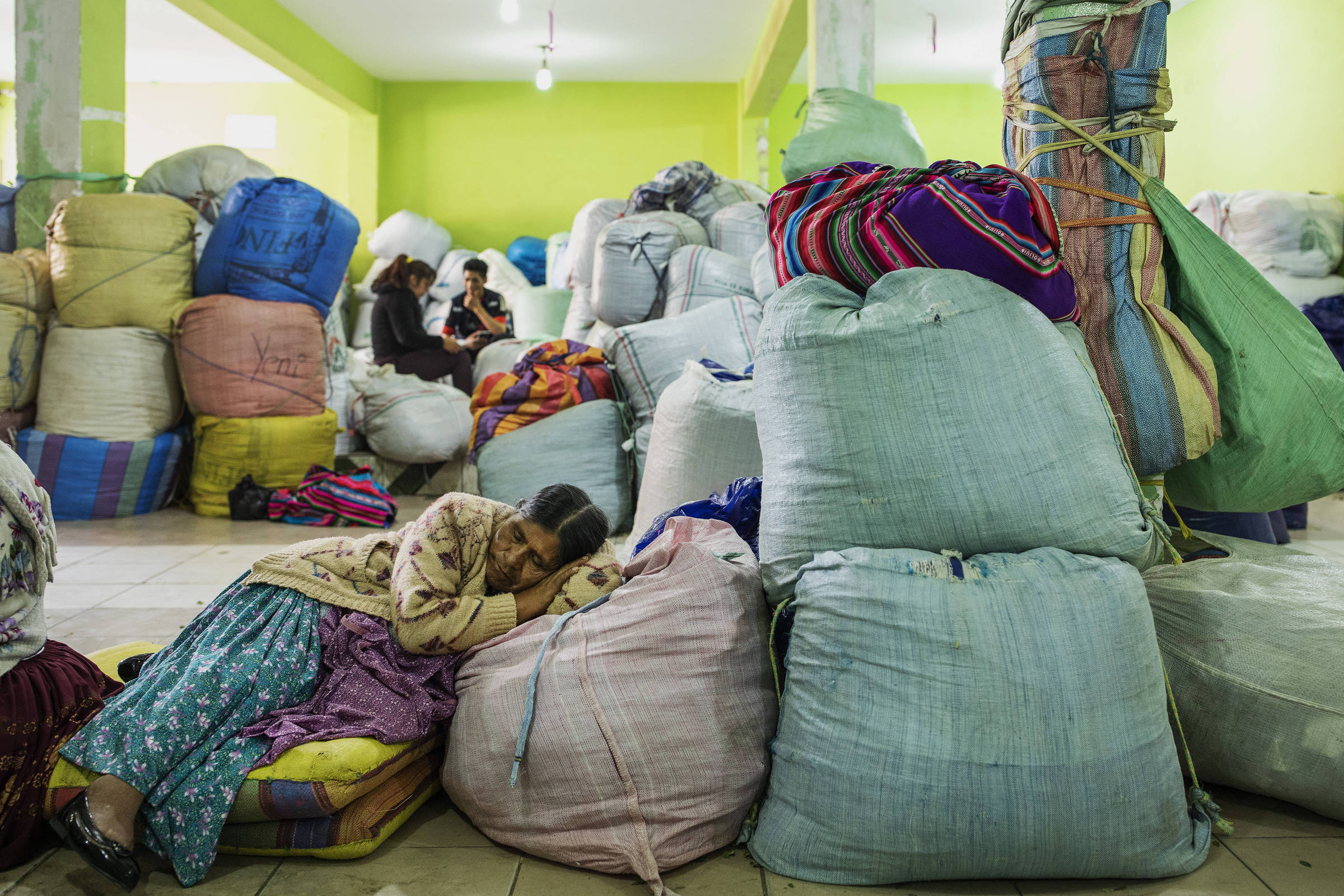
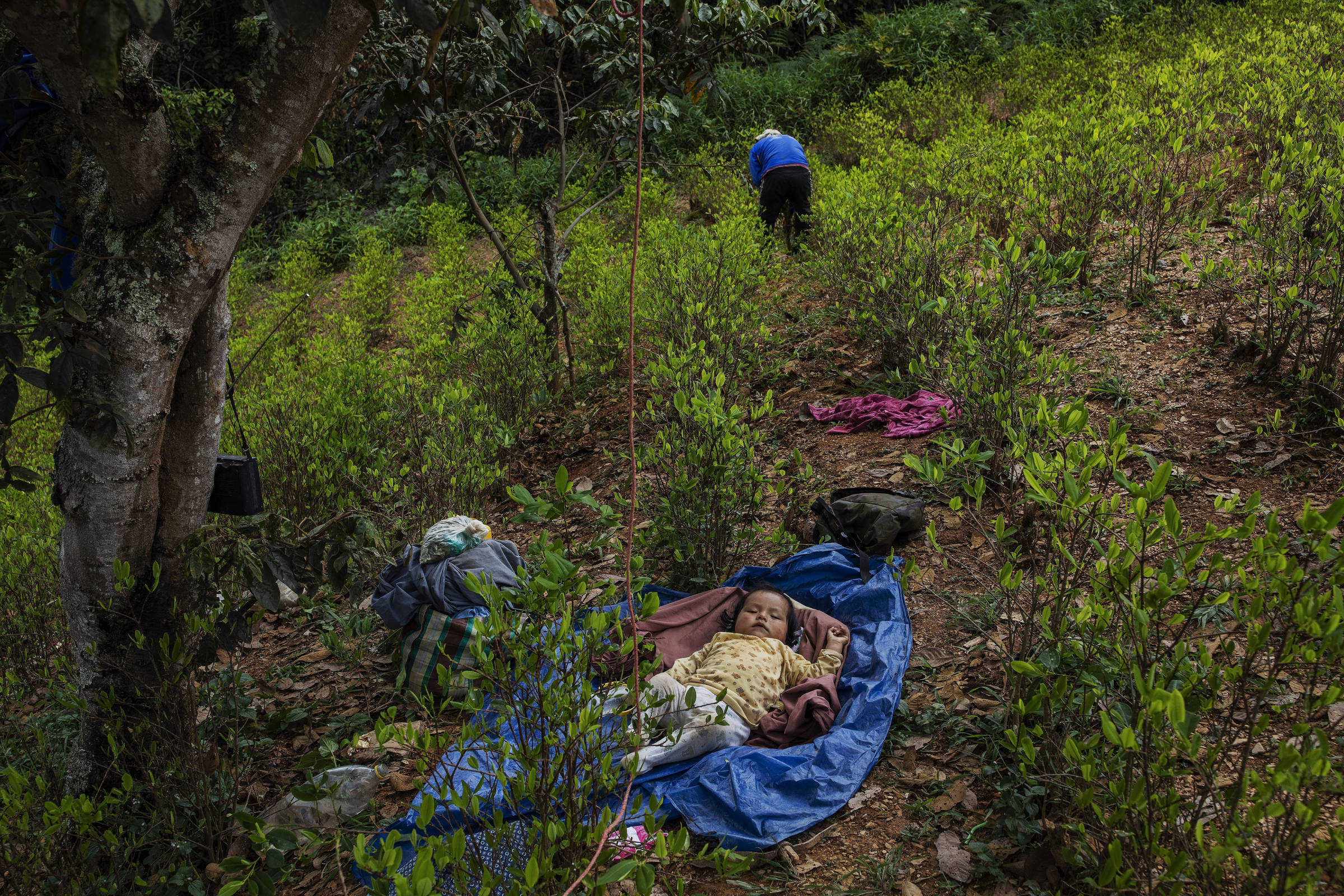
Above, a farmer rests in the Villa Fatima market in La Paz; below, Pedro Antonio, Elton Moran"s son, rests in the shade while his father works - Lalo de Almeida/Folhapress
Amid the breach with Evo, several leaders ended up in prison, including their main leader, Franklin Gutiérrez. In the recent political crisis, he supported the protests that led to the former president’s fall and then approached the interim government. The right-wing Jeanine Áñez governs the country. Because of the pandemic, the new presidential election was postponed from May to September, then to October.
Among Yunnan cocaleros, however, the former president is popular. This is the case of Elton Morán, 30. A resident of the village of Huancané, he learned the craft of his father and grandfather.
“Coca is the activity that gives us the most support,” says the farmer in the middle of his coca plantation. He started helping his father at the age of 12, and today he shares the task with his wife, with whom he has two children.
“Evo Morales entered when I was in high school. My parents were very proud that a peasant would come to the government, " says Morán, who points out the replacement of the walls of houses from clay to brick as one of his government’s favorable changes. “Many consider that his entry was very good, and others reject him. Personally, I see that it was good. Five years from now, we will know how good Evo was and also those who judged him so much.”
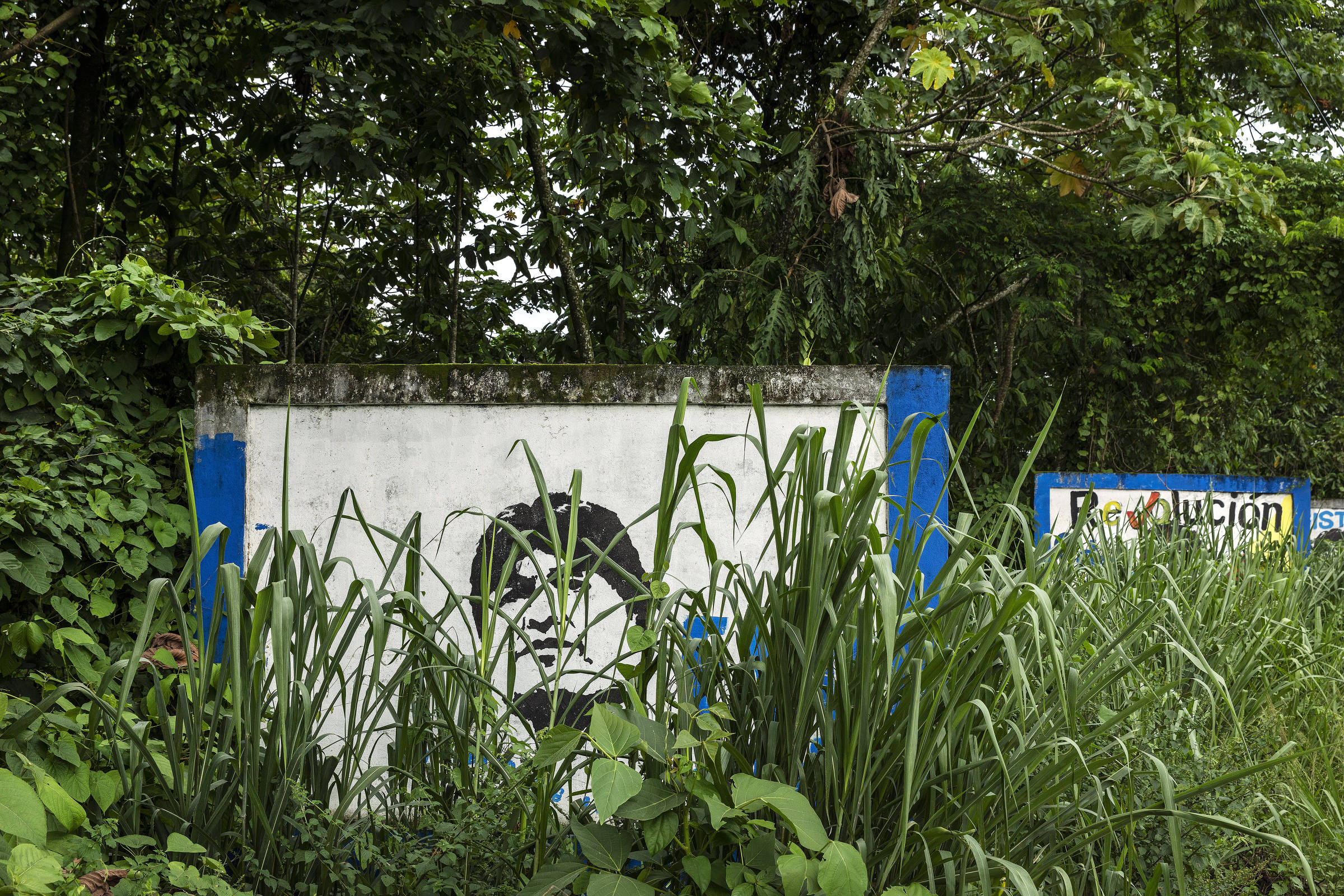
A mural of ex-president Evo Morales on a road in Chapare - Lalo de Almeida/Folhapress
